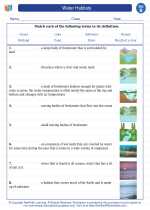Rainy Weather
Rainy weather refers to the condition of the atmosphere where precipitation in the form of water droplets falls from the clouds. This phenomenon occurs when water vapor in the air condenses into liquid droplets and becomes heavy enough to fall to the ground. Rain is an essential part of the Earth's water cycle and is crucial for sustaining life on our planet.
Causes of Rain
Rain is primarily caused by the process of evaporation, condensation, and precipitation. When the sun heats up the Earth's surface, water from oceans, rivers, and lakes evaporates into the atmosphere in the form of water vapor. As the warm, moist air rises, it cools and condenses to form clouds. When the water droplets in the clouds become too heavy, they fall to the ground as rain.
Effects of Rain
Rain has several effects on the environment and living organisms. It provides the necessary water for plants to grow and thrive. It also replenishes the water supply in rivers, lakes, and reservoirs, supporting various ecosystems. However, heavy rainfall can sometimes lead to flooding, erosion, and other natural disasters that can cause damage to homes, infrastructure, and the environment.
Study Guide
- What is the process that causes rain to occur?
- How does rain benefit plant life?
- What are the potential negative effects of heavy rainfall?
[Rainy] Related Worksheets and Study Guides:
.◂Science Worksheets and Study Guides Second Grade. Water Habitats

 Activity Lesson
Activity Lesson
 Worksheet/Answer key
Worksheet/Answer key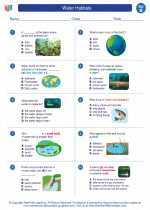
 Worksheet/Answer key
Worksheet/Answer key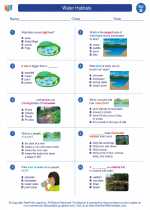
 Worksheet/Answer key
Worksheet/Answer key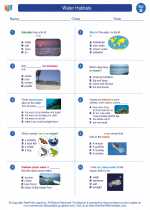
 Worksheet/Answer key
Worksheet/Answer key
 Vocabulary/Answer key
Vocabulary/Answer key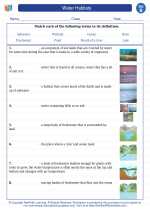
 Vocabulary/Answer key
Vocabulary/Answer key